Discovering Authentic Croatia's Secrets With Seoski Tourism
November 4, 2021 – Village tourism or countryside tourism - Seoski tourism in Croatia - offers authentic, traditional experiences. Aleksandra Kuratko, secretary of Udruga ruralnog turizma Hrvatske (Croatian Rural Tourism Association) tells us more about it, and their work to help facilitate it
Croatia's visitor offer is evolving and expanding. There are exciting aspects of authentic Croatia to be discovered. Away from the beach, villages inland often look remarkably similar to how they did one hundred years ago. There, crops are grown and produce made in ways passed down through generations of families. And, in some lucky instances, these family farmers are willing to open their doors, invite you inside and show you how they live.
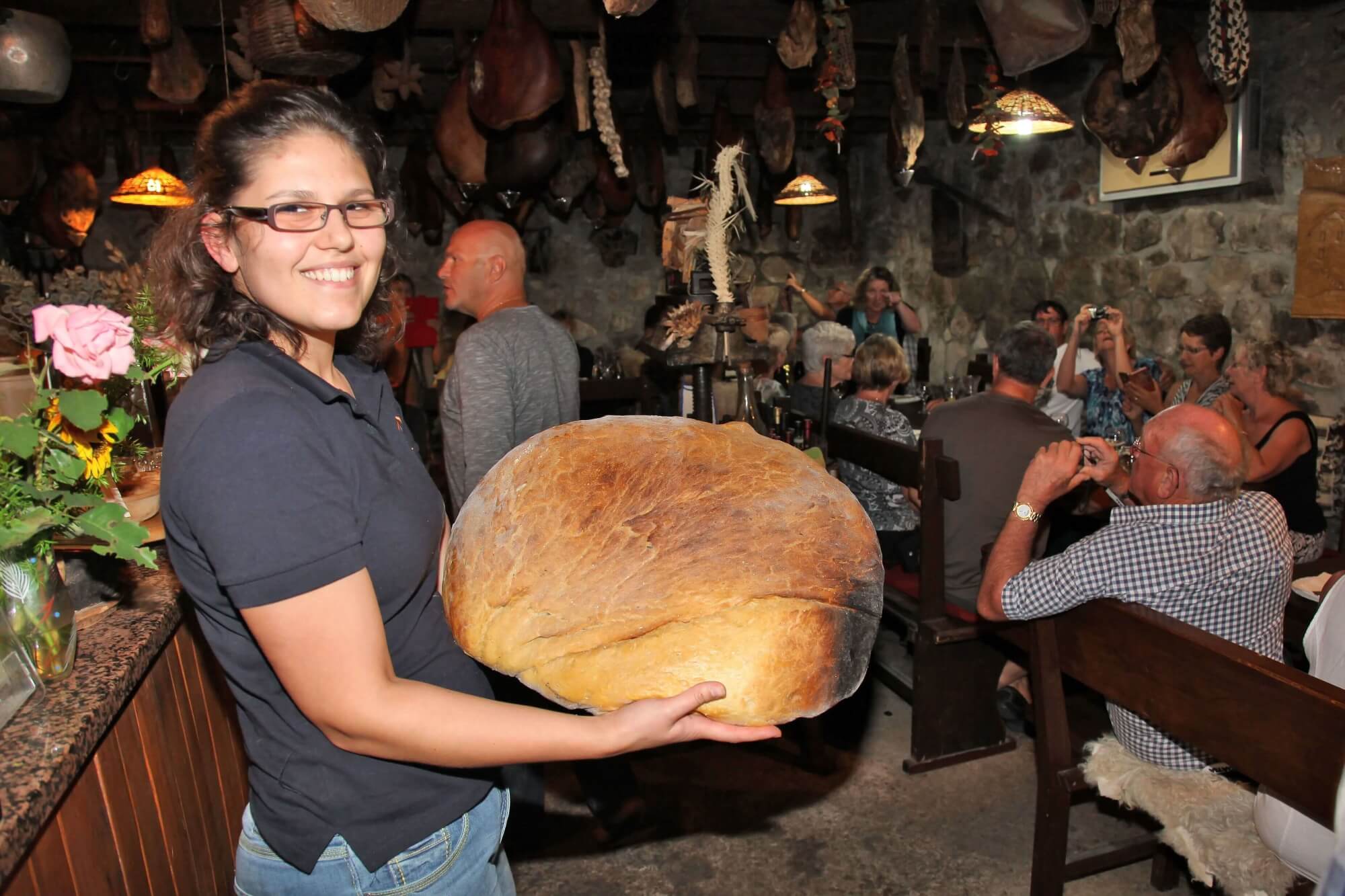 Bread from the peka at Agroturizam Antunović on Pelješac
Bread from the peka at Agroturizam Antunović on Pelješac
Seoski Tourism – translated as either village tourism or countryside tourism – is just that. Family farms that offer hospitality. These are some of the most homely and most welcoming accommodation experiences you can have in Croatia. Offering sights and sounds, tastes and flavours that you can't find anywhere else, visits or stays in Seoski Tourism places have long been loved by locals for weekend breaks or holidays outside peak summer. But, increasingly, these authentic Croatia experiences are being discovered by international visitors.
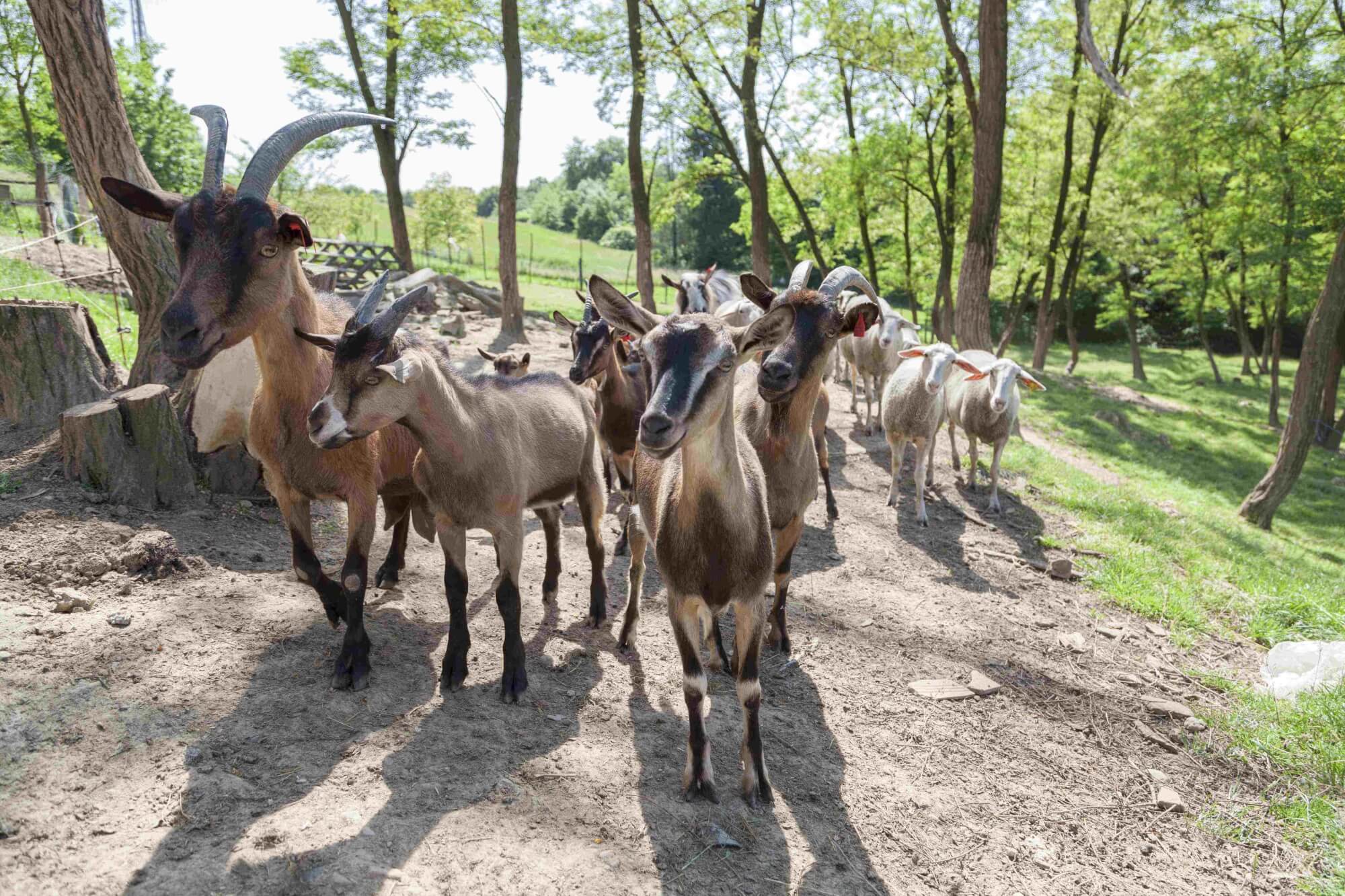 Moslavina goats at Kezele family farm © Davor Konjikušić
Moslavina goats at Kezele family farm © Davor Konjikušić
One institution trying to facilitate the growth in interest is Udruga ruralnog turizma Hrvatske - Croatian Rural Tourism Association. Since it was formed in 2016, they have tried to bring together Croatia's family farm hosts, to promote them and educate them, and to build bridges between these independents and tourist boards, tourist agencies, educators and even the wider world outside Croatia.
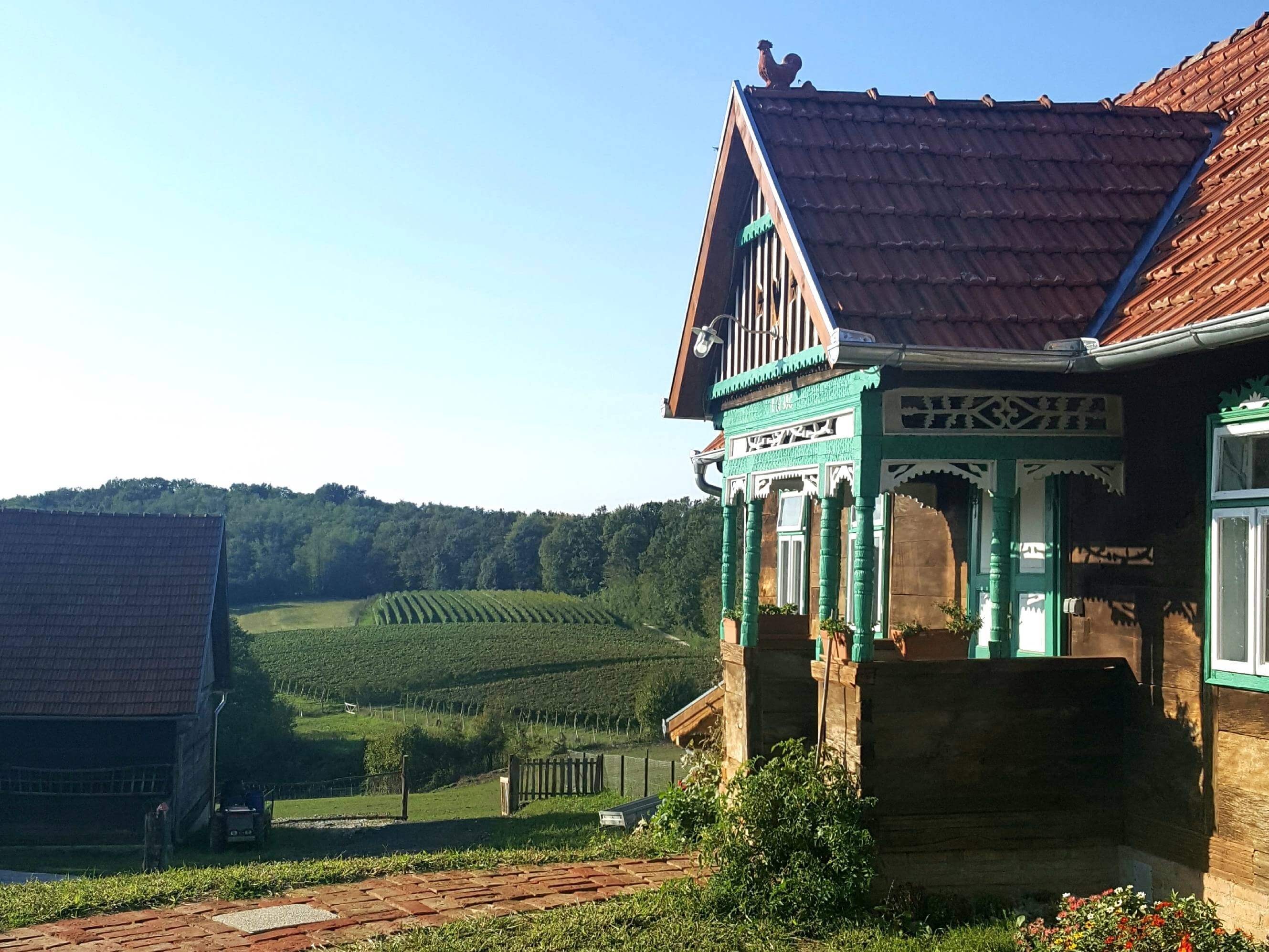 Seoski turizam Kezele in Šumećani, on the border of Zagreb County and Bjelovar Bilogora County © Davor Konjikušić
Seoski turizam Kezele in Šumećani, on the border of Zagreb County and Bjelovar Bilogora County © Davor Konjikušić
Based in Ivanić-Grad, Zagreb County, the Croatian Rural Tourism Association is currently touring the length and breadth of the country, holding workshops with as many Seoski Tourism family farms that will come. And if the farmwork doesn't allow them free time, then they can attend Croatian Rural Tourism Association workshops online.
On the eve of the association's online Seoski Tourism workshops for Central Croatia and Slavonia, TCN interviewed Aleksandra Kuratko, secretary of Udruga ruralnog turizma Hrvatske, to find out more about Seoski Tourism in Croatia.
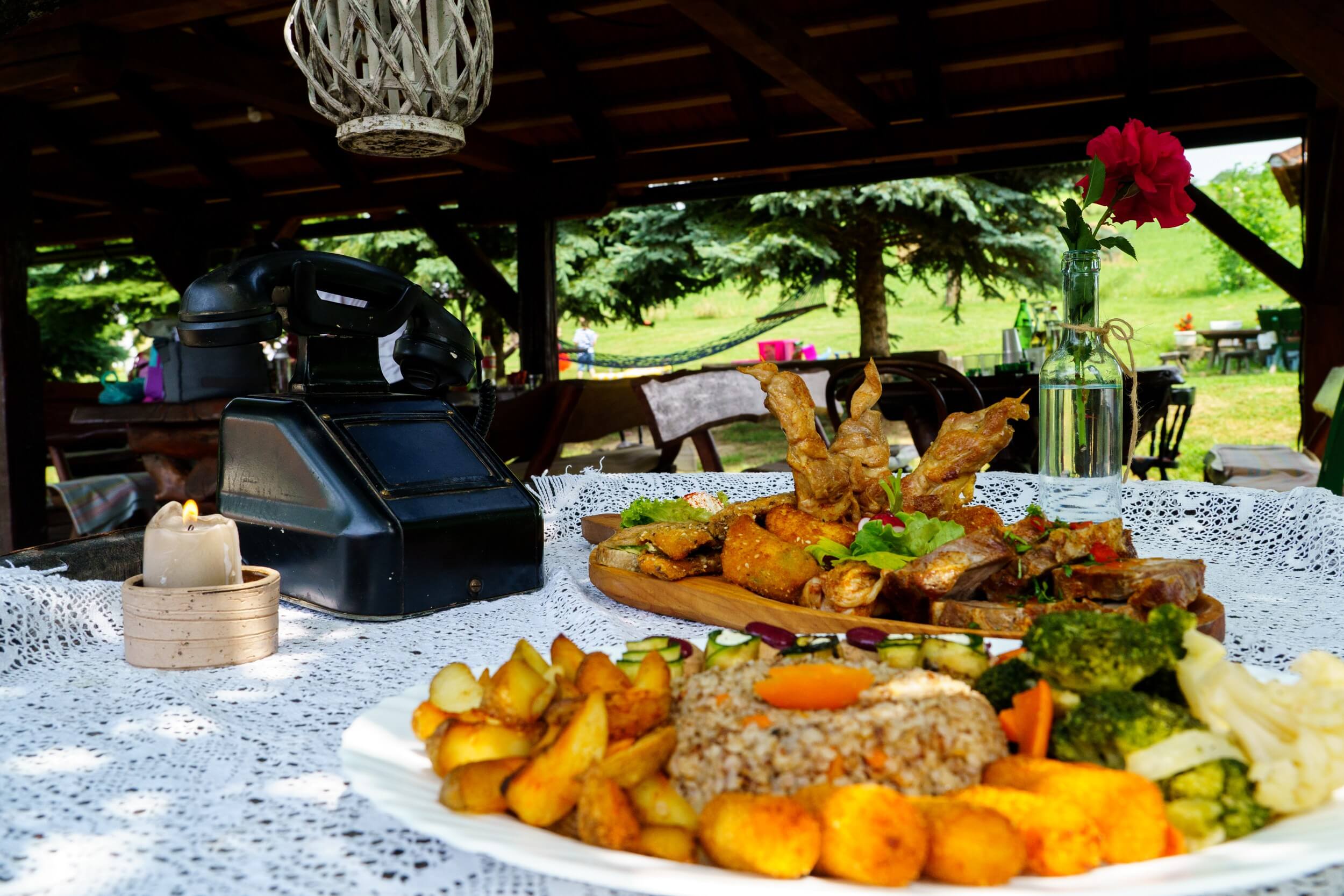 Prigorje specialties at Rakić family farm
Prigorje specialties at Rakić family farm
My name is Aleksandra Kuratko and I am secretary of Udruga ruralnog turizma Hrvatske. As an association, we are 5 years old.
We have 35 members, most of whom are service providers in what we call Seoski Tourism. We also have several tourist boards and two educational institutions as members.
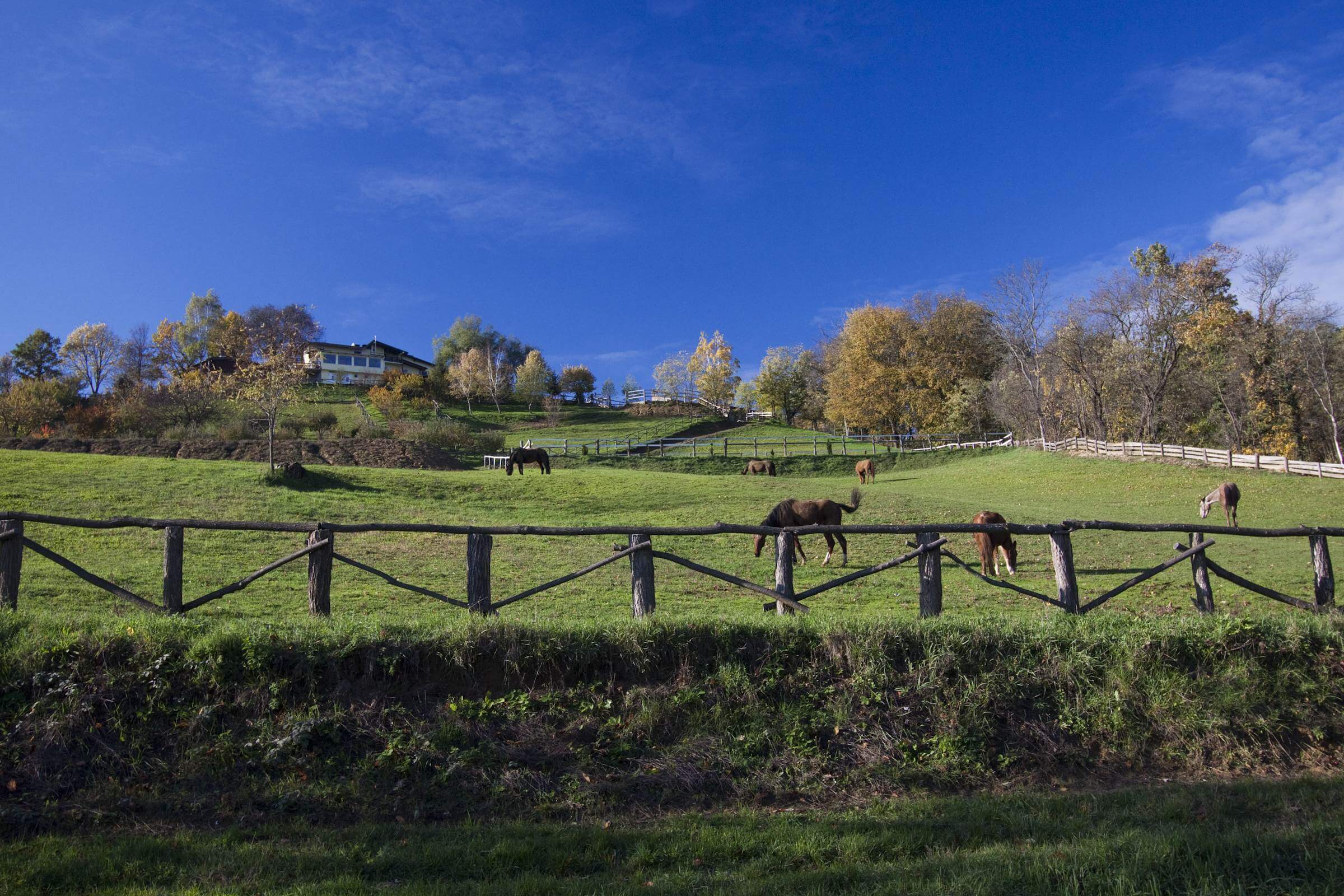 Bilogora horses in autumn at Agroturizam Na malenom brijegu © Vladimir Vlajinić
Bilogora horses in autumn at Agroturizam Na malenom brijegu © Vladimir Vlajinić
Seoski tourism is not quite the same as rural tourism, because rural tourism is many different types of tourism that happen in rural areas. Seoski tourism - which you might translate as village tourism - is quite specific. We assemble people who work in agriculture and who, at the same time, are also offering hospitality. In English, you might call them Farm Stays. Or Agro-tourism – a merging of agriculture and tourism.
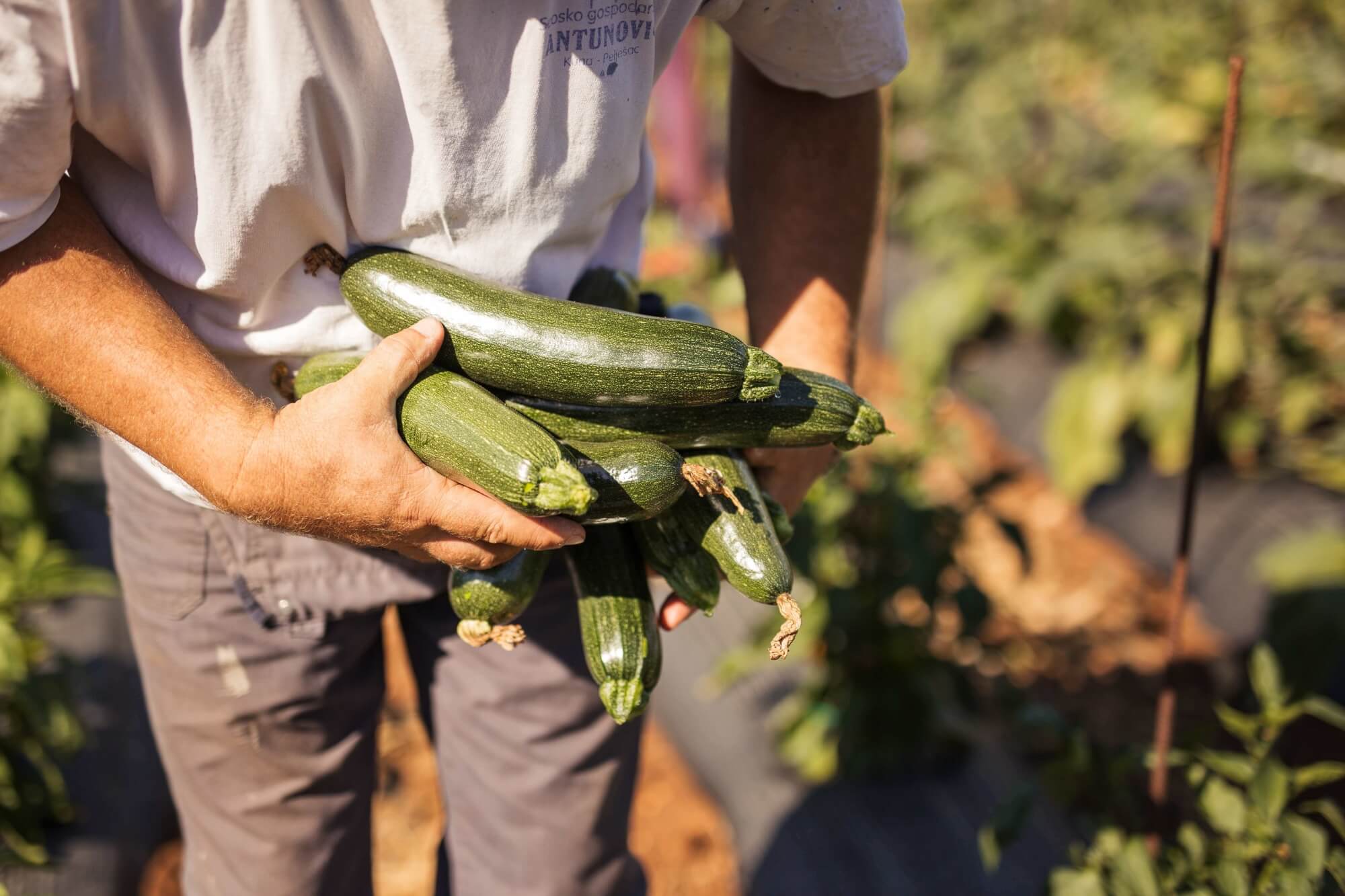 Fresh vegetables at Agroturizam Antunović on Pelješac
Fresh vegetables at Agroturizam Antunović on Pelješac
People who work on agricultural estates often take care of local cultural heritage. For example, they might maintain and renew traditional wooden or stone houses. Many also have etno collections, in which they preserve different objects from their region. Some of these objects might have been used in agriculture and households hundreds of years ago. So, they are preserving the cultural heritage of Croatian villages. This is what we call material cultural heritage. But, there's another kind.
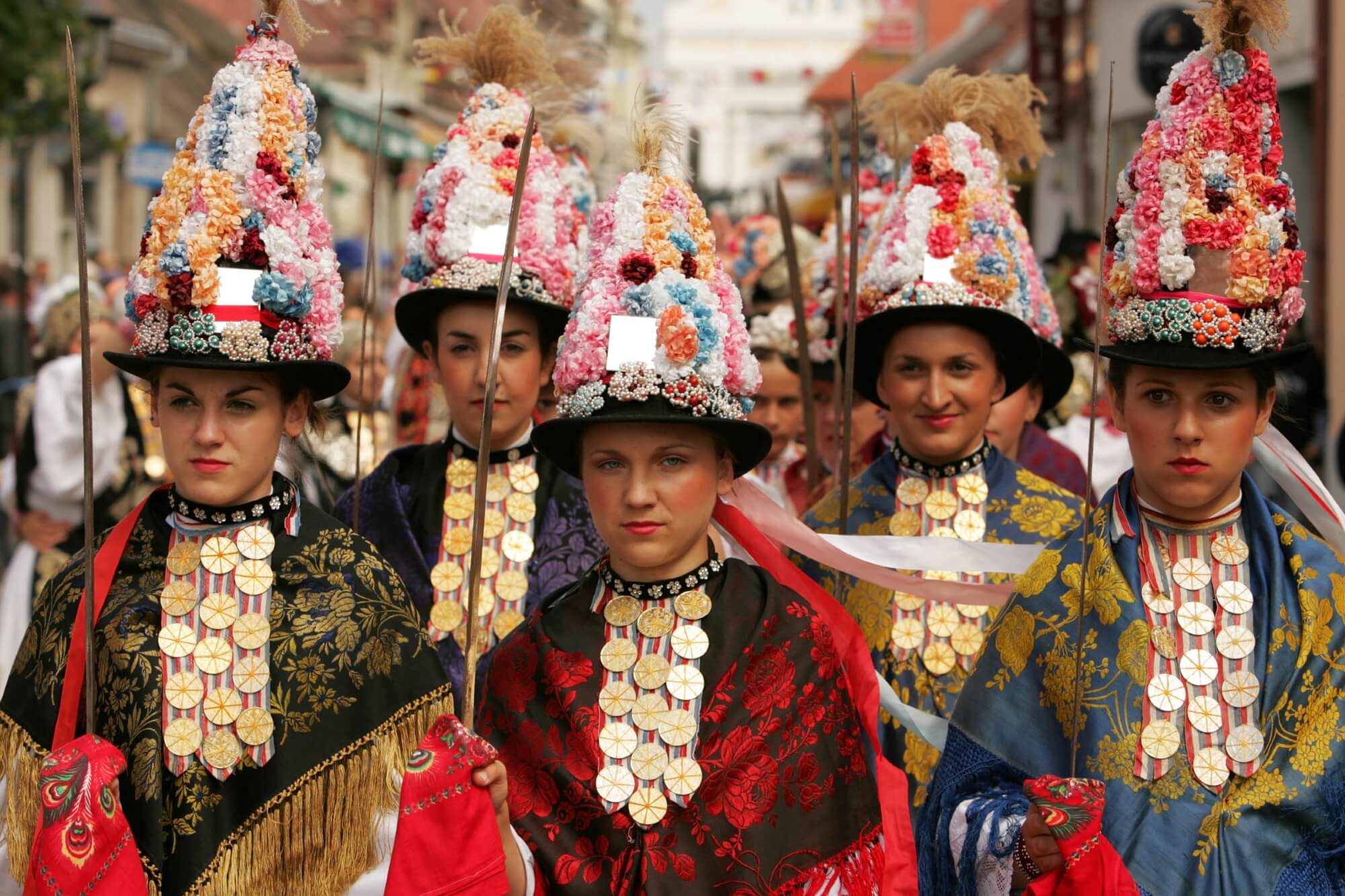 Cultural heritage preserved in one Slavonian village © Mario Romulić
Cultural heritage preserved in one Slavonian village © Mario Romulić
Non-material cultural heritage is also a part. That might be preserving old recipes of traditional, regionally-specific dishes. Or, it might be showcasing the songs and dance of local music.
We are currently running a project which is supported by the Croatian Ministry of Tourism and Sports in which we hold 37 Seoski Tourism workshops in the field all over Croatia. There will also be around 15 online workshops. The workshops are aimed at colleagues who currently operate in Seoski Tourism – they work in agriculture and offer hospitality. Also invited are local tourist boards and local action groups.
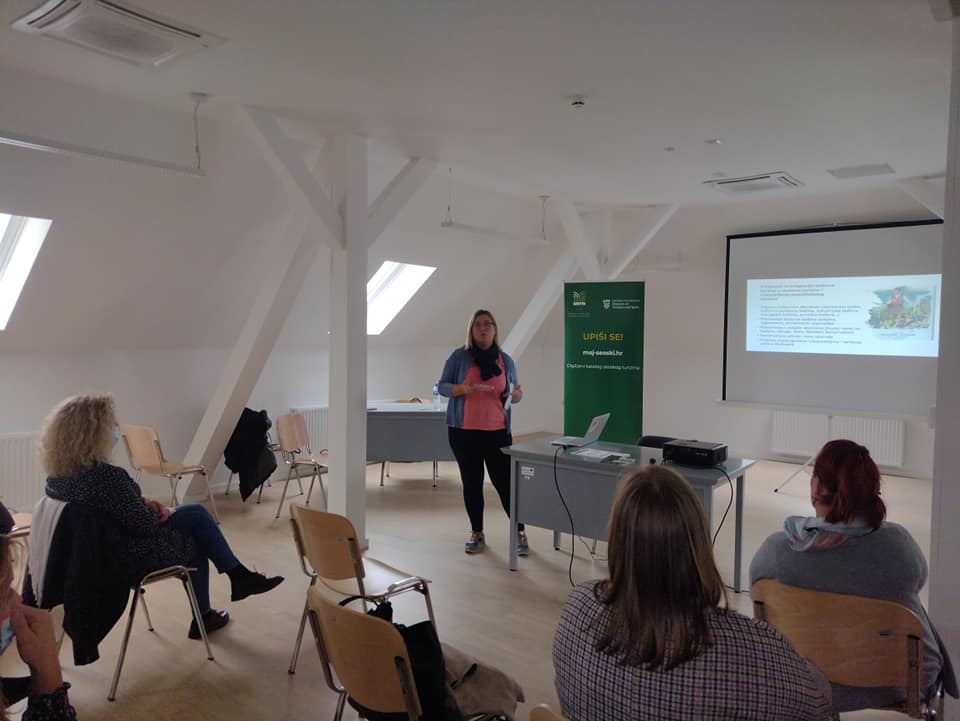 Photo from URTH workshop in Slatina
Photo from URTH workshop in Slatina
So far, we conducted 20 workshops in the regions of Central Croatia, Slavonia and Baranja, and Podunavlje. From next week until the end of the year, we will conduct the workshops in Istria, Kvarner, Lika and Dalmatia. Some service providers were not able to attend earlier workshops, because of work commitments of Covid. So, we decided to also offer access to the workshops online. Tomorrow is our first online workshop for Central Croatia and on Friday it's the online workshop for Slavonia.
These workshops are interactive discussions between our association, service providers and all other stakeholders. We discuss the legislative framework, which can be extremely complex. We talk about new trends in tourism for the post-pandemic era. We also discuss the importance of integrating cultural heritage in digital promotion.
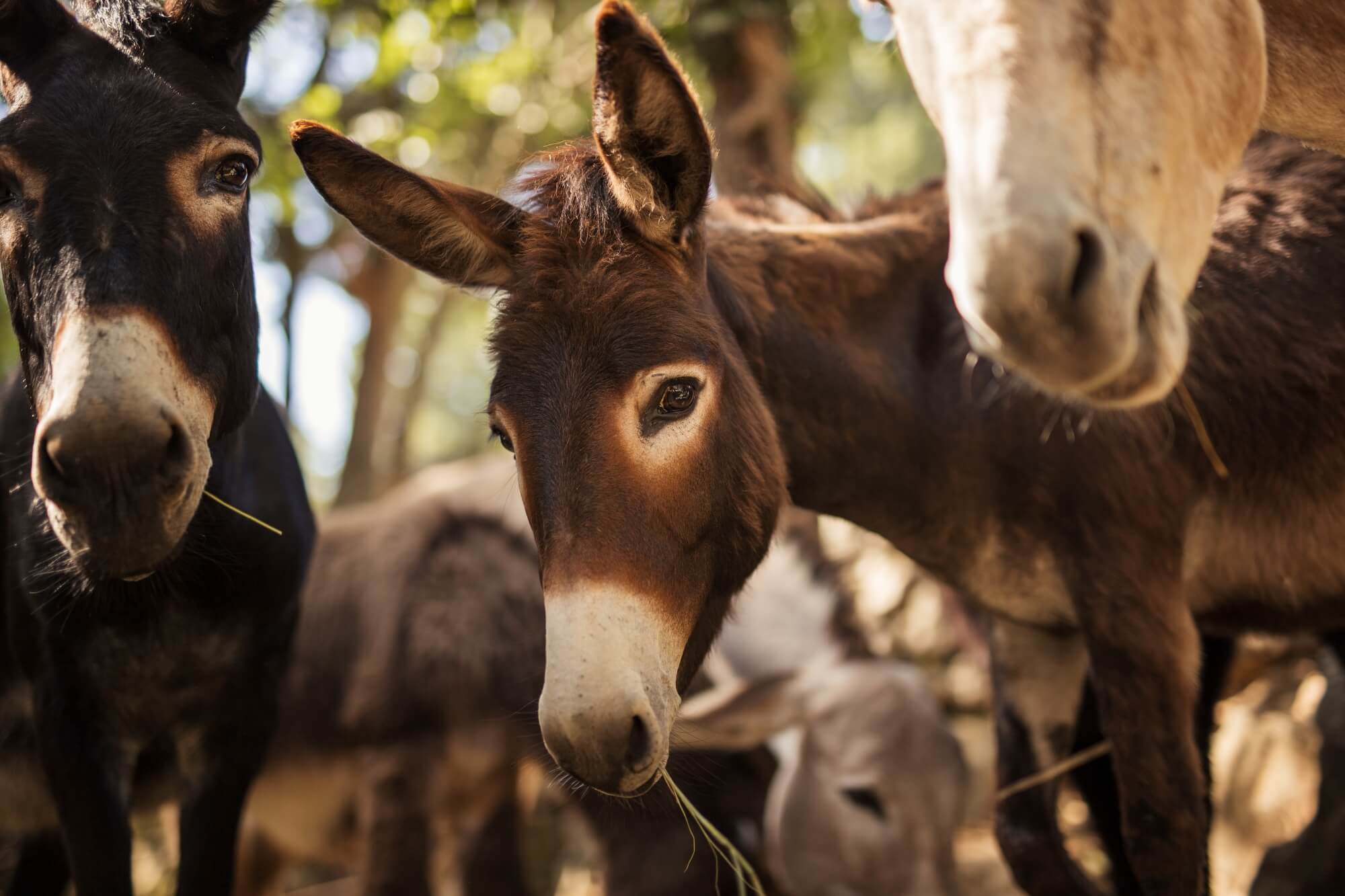 Donkey farm at Agroturizam Antunović on Pelješac
Donkey farm at Agroturizam Antunović on Pelješac
For the legislative framework, we have initiated the formation of a working group for the development of Seoski Tourism, which is now operating in the Croatian Ministry of Tourism and Sports. So, at the workshops, we ask if anyone is having issues. We collect the responses and address them in the working group.
Part of the workshop is the presentation of a new web application of Seoski Tourism, which we have developed with Croatian Ministry of Tourism and Sports. It has two purposes. One is to create a digital catalogue of Croatian Seoski Tourism. You can see region by region some of the Seoski Tourism options – currently around 40, those who have already enrolled.
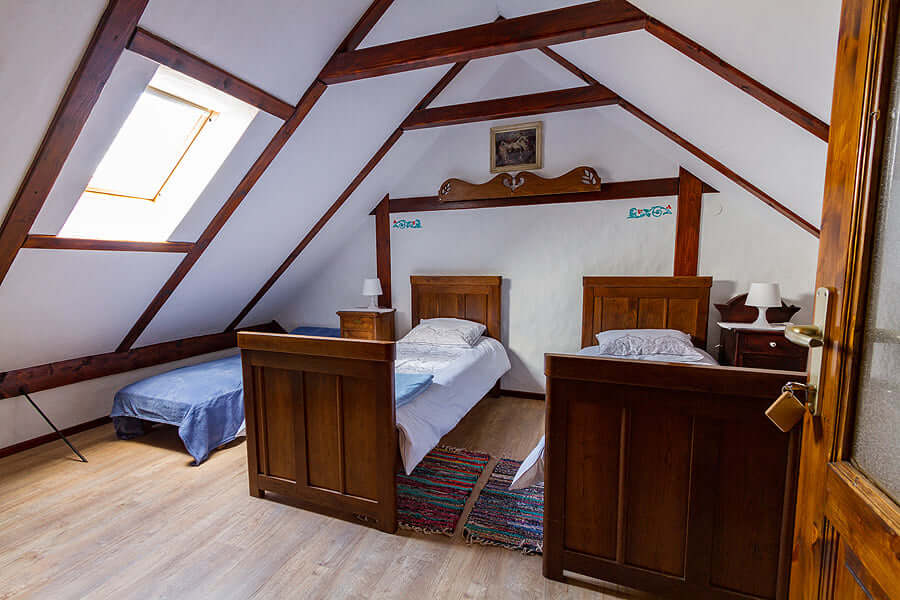 Podravina Etno rooms at Zlatni klas Otrovanec
Podravina Etno rooms at Zlatni klas Otrovanec
A version of the app is currently available on the website of the National Tourist Board. But, they are building a new website. The forthcoming version of the catalogue will likely be more user-friendly with many more functions and options. On the new website, Croatia's Seoski Tourism options will be detailed in many different languages. It should be a great resource not only for tourists but for travel agencies, journalists like you and for educational institutions. That's the reason we are devoting time in our workshops to encourage Seoski Tourism providers to enroll. We are just at the beginning of the process.
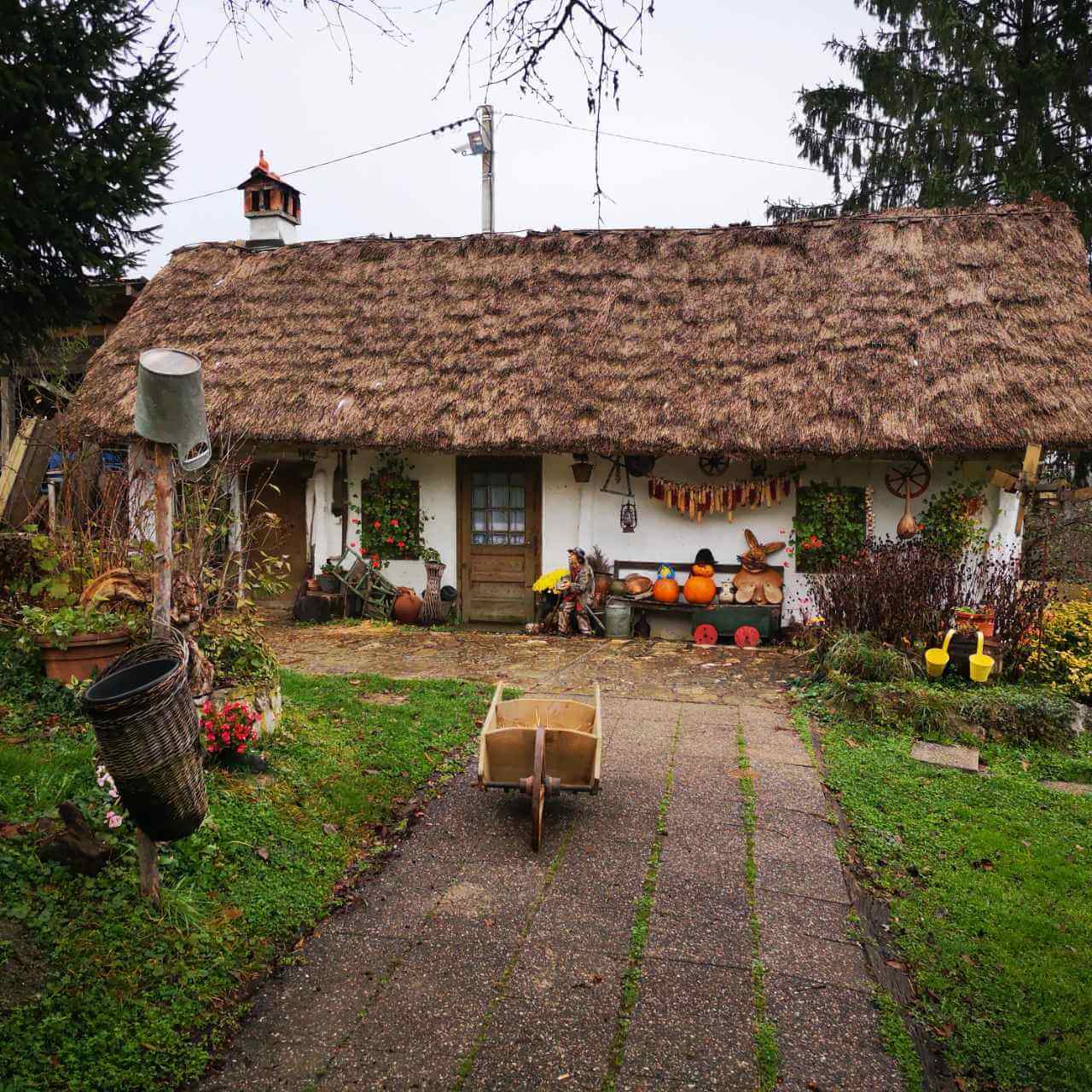 Grešna pilnica in Zagorje © Jasna Podboj
Grešna pilnica in Zagorje © Jasna Podboj
The second purpose of the app is to collect information about the service providers. This info will be used by our working group when defining a Croatian model of Seoski Tourism. So far, we have taken examples from Slovenia, Italy and other countries that are successful with Seoski Tourism. But, these models were entered into our legislative system without fully considering our distinct business and cultural environments. That is now about to change.
We are very happy that, following many years of partially successful advocacy, there is now political will at a ministerial level to really shape things up, to change the laws and regulations in order to facilitate Seoski Tourism. We want to encourage more Seoski Tourism, not to have people from agriculture being turned away because of the difficulty of the process and bureaucracy.
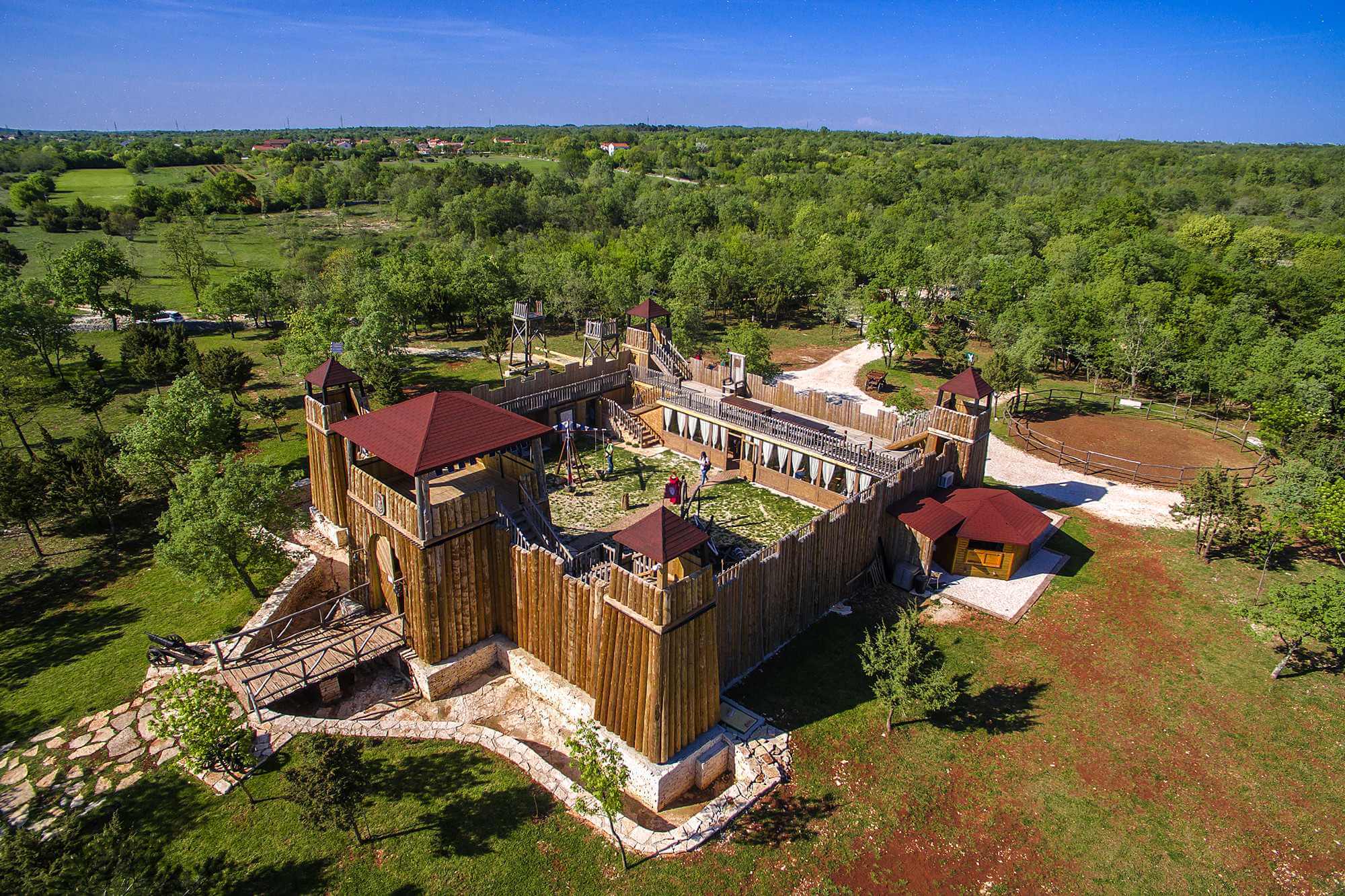 Medieval Theme Park San Michael © Silvia Otočan
Medieval Theme Park San Michael © Silvia Otočan
You said part of the workshops will focus on new trends. What are some of these?
Research has been done by a working group that is developing a new tourism strategy for Croatia. It's called Strategy for Sustainable Tourism to 2030. Under the auspices of this group, a number of research fields have been analysed.
The collected data shows that a huge percentage of tourists are now more inclined to eat locally grown and healthy food. They want to spend their time on estates that are run in accordance with ecological principles. So, they really care about issues like how waste is disposed of etc. They also pay a lot of attention to culture. They are curious to learn exactly how we are living, how we are working and how we produce things. They want to learn about our society and culture. And, importantly, they really care about how they spend their money. Above all, they want to spend money in areas that can help support local communities.
 Prigorje Breakfast at Rakić Family Farm
Prigorje Breakfast at Rakić Family Farm
For us, this is really important. Because Seoski Tourism answers these demands to an incredibly high level. We do produce local, healthy food. Not only on the agricultural estates where you can experience Seoski Tourism, but also from their neighbours who just do agriculture. We are concerned with ecology, we protect cultural heritage and the money spent in Seoski Tourism stays in local communities, where it has very beneficial effects.
In the digital promotion part of the workshops we are trying to persuade people about the importance of their online presence. Basically, these days, if you're not online, it's almost like you don't exist. So, we try to explain the importance of having good-quality photos, short videos and a regular online presence.
 Kulen, čvarci and other specialties at Baranjska kuća © Denis Despot
Kulen, čvarci and other specialties at Baranjska kuća © Denis Despot
That's interesting. In some cases, it might be like two different worlds colliding - people who work in a traditional industry and a traditional environment having to adapt to a very modern way of operating. There's also another potential collision when providers learn of the expectations within modern tourism. Because these people can no longer just work in agriculture. To operate in Seoski Tourism, you're also very much expected to also be a host.
Yes. All of our current service providers who are successful within Seoski Tourism are also great hosts. It's essential. You can see it in almost all of the reviews for this kind of tourism. Guests come for the food and drinks and surroundings, yes. But, what they value the most, what they remember the most, is the host part of the experience. On the estates of Croatian Seoski Tourism, guests are welcomed like family. Across all of Croatian tourism we are expected to be good hosts. It's part of our reputation and the reason why many people come here from all over the world. In Seoski Tourism, it is vital we live up to those expectations.
 Kezele family farm © Davor Konjikušić
Kezele family farm © Davor Konjikušić
Another aspect of this, which is a more recently-observed element, is that visitors often want an insight into the actual lives, even the personalities of their hosts. They want not only to taste the homemade sausages you make, but they also want to know how you do it, where you do it, how you learned to do that. When they go to Spain, they want to know how the people there make their wine. And, when they come to Croatia, they want to learn how we do it here.
So, all in all, those of us in Seoski Tourism are really busy. We are in agriculture, yes, but we are also in tourism and we are also online. With this more recently-observed aspect, we will need to try and devote even more time to our hosting. It can be difficult to balance the demands on your time. But, in our workshops, we are trying to persuade people to talk more about themselves, their lives, their cultural heritage. And, if there isn't time to do everything themselves, then to involve different and often younger generations of the family. Sometimes within the hosting or alternatively just with the online promotion and presence.
 Kezele family farm ethno collection © Davor Konjikušić
Kezele family farm ethno collection © Davor Konjikušić
I've visited some family farms that were right at the start of their journey with Seoski Tourism and they seemed surprised that I was at all interested in what they do and how they do it. I think maybe they thought I was a bit crazy.
Yes, that is a response we sometimes also see at first. I think it's because our generation takes a lot of things for granted. We sometimes think that what we do is just what we do. We are not so good at showcasing it. “Why would I show someone how I make my cheese? I make my cheese like my grandmother used to make it” But, for those who open their doors to Seoski Tourism, inquiries about how they do what they do are only increasing. So, they seem to appreciate how we advise them in the workshops.
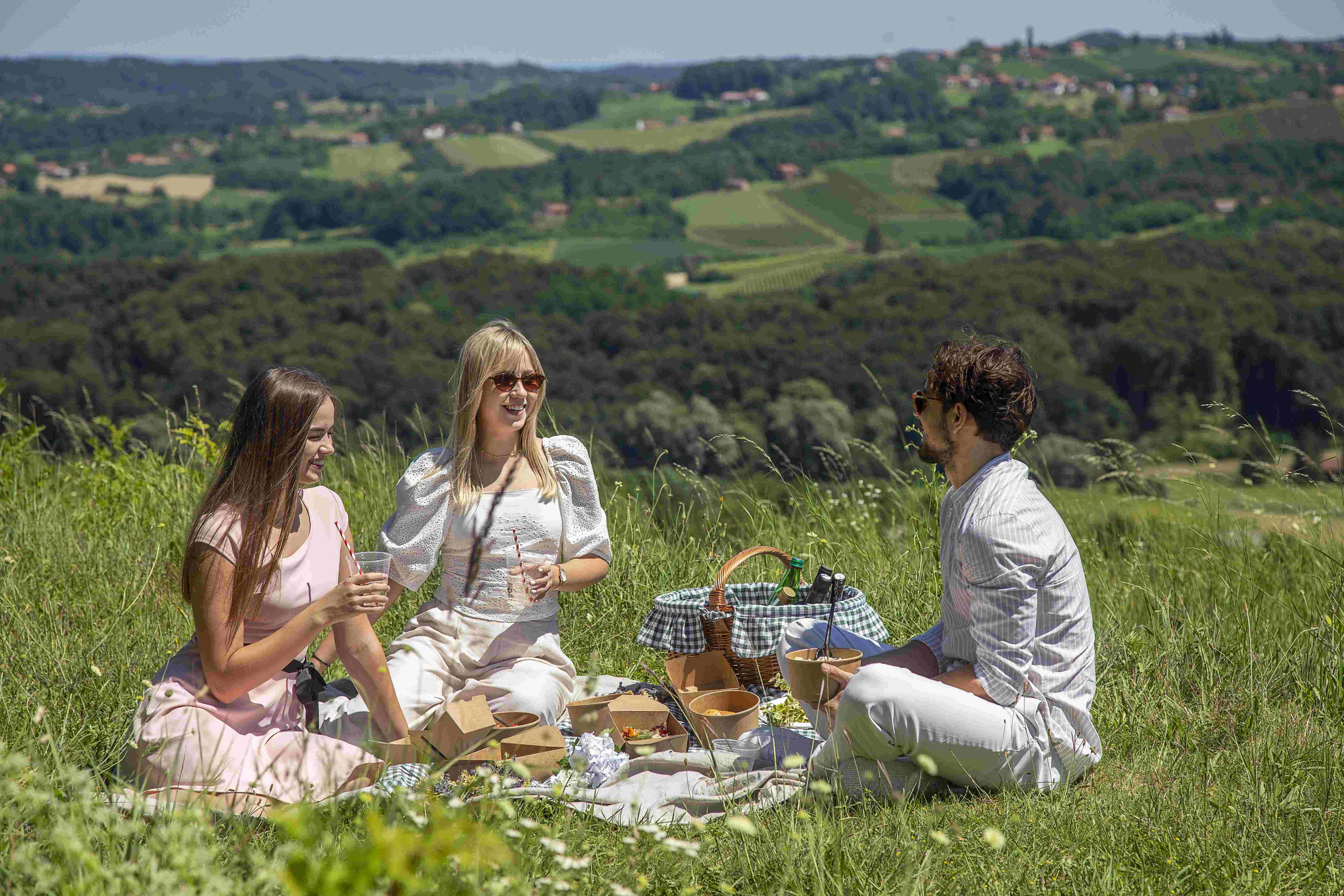 Picnic by Restaurant Međimurski dvori © Igor Nobilo
Picnic by Restaurant Međimurski dvori © Igor Nobilo
We are trying to let our producers know that Seoski Tourism is not just a platform to sell their produce and an overnight stay, but it's a full experience they can sell. There are agricultural farms in Austria that are established in tourism that you must pay only to visit. Of course, that doesn't happen currently anywhere in Croatia, even though some of our Seoski Tourism estates have sections that look like museums.
Some of these aspects are very new. And the feedback is great. I truly believe there are hidden treasures to be discovered in some Croatian villages. We are here to tell that story.
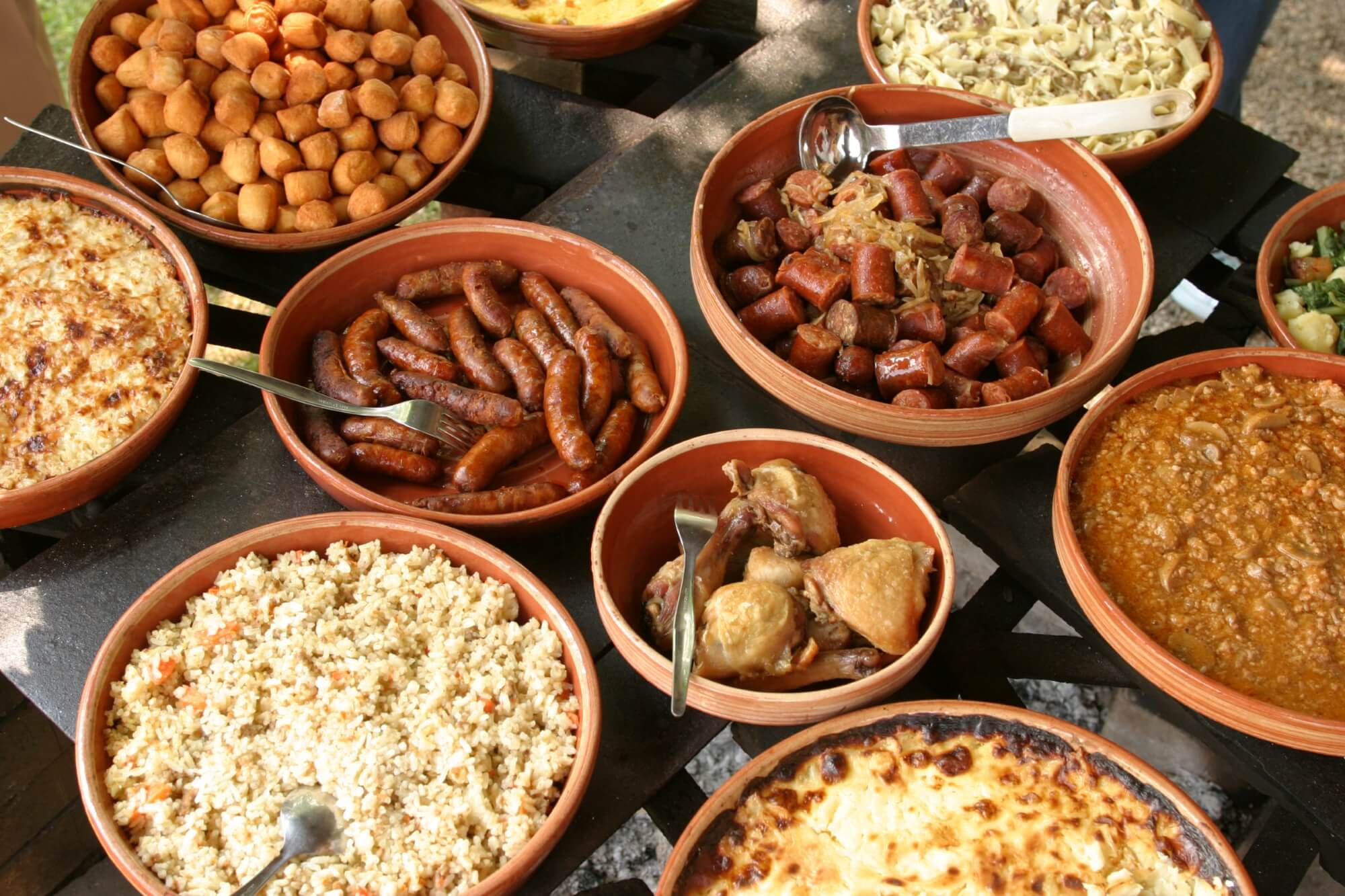 Selection of food from a Slavonian village © Mario Romulić
Selection of food from a Slavonian village © Mario Romulić
What is so rewarding about Croatian Seoski Tourism that international visitors would want to go to a traditional farm in some inland village instead of lying on the beach in Dalmatia for 14 days?
People come because they really want to see a different side of Croatia. And, there are many different aspects of Croatia to discover – not just Seoski Tourism, but also National Parks and Nature Parks. All of our current trends show us that more and more tourists are willing to come inland from the coast or to explore a different part of Croatia – inland Istria, for example, or continental Croatia.
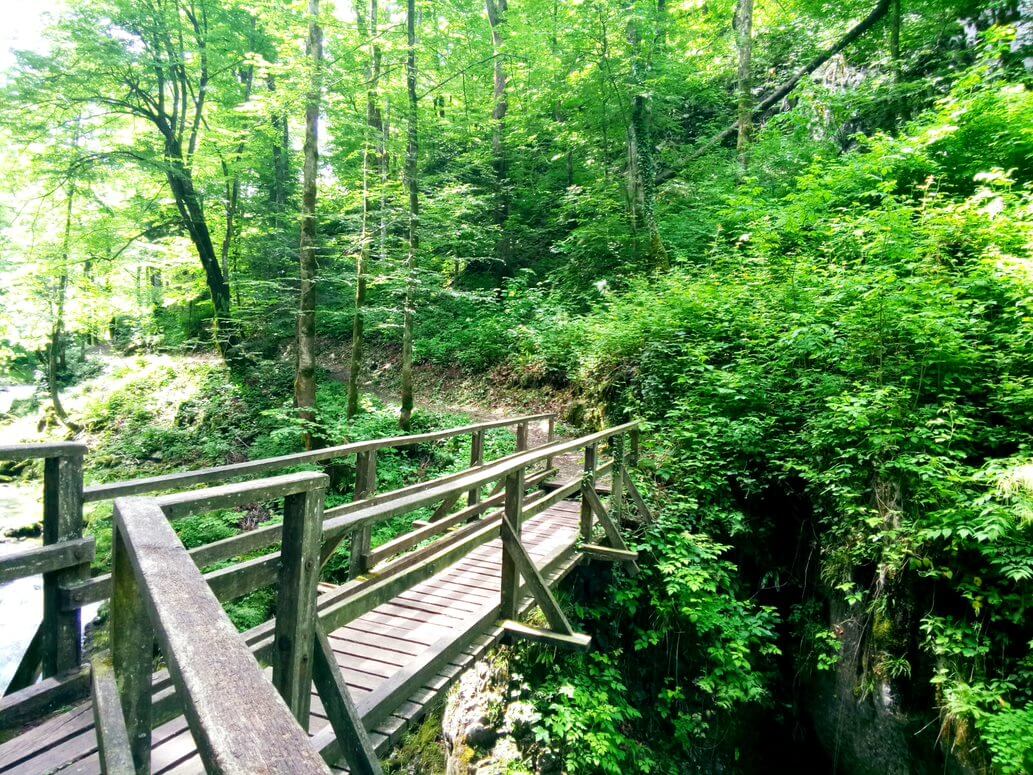 Kamačnik river canyon © Aleksandra Kuratko Pani
Kamačnik river canyon © Aleksandra Kuratko Pani
They really want to try authentic, local food. They want to eat healthy, to know what they are eating and how it is made. And, they want to experience flavours that are different from the usual ones they get from the supermarket.
 Traditional Međimurje table at Etno restaurant Međimurski dvori
Traditional Međimurje table at Etno restaurant Međimurski dvori
Also, I would say that with Seoski Tourism, people get to know better an authentic version of Croatia and its culture. It's a story we hear very often from our members. Some of them are visited by large groups from cruisers. These are people who might be on a cruise on the Adriatic and who journey inland for a day trip. Or, it might be a group who are cruising the Danube and disembark to visit a family farm in Slavonia, Baranja or Srijem.
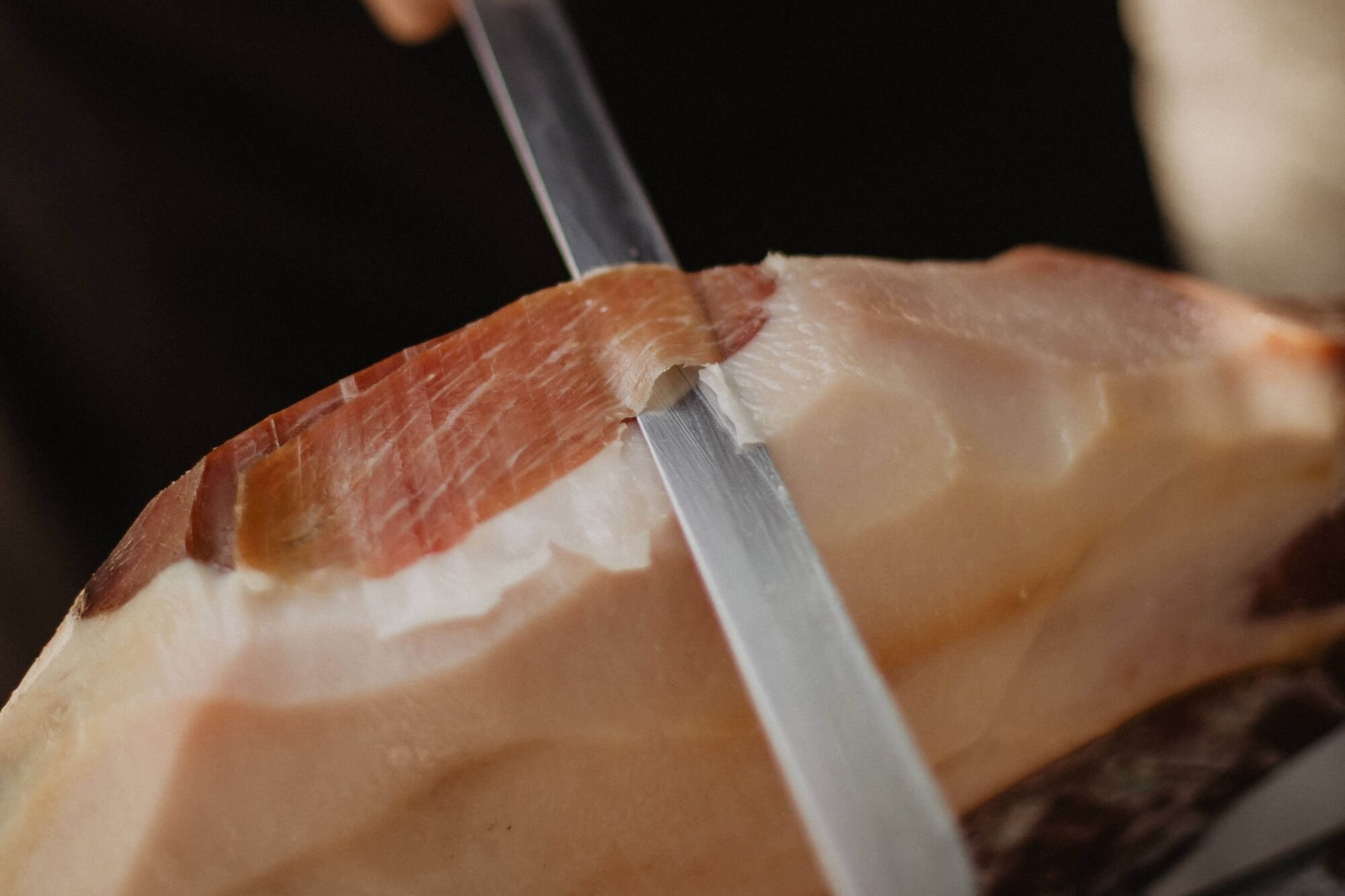 Prosciutto from Drniš at Agrotourism Kalpić © Ivana Kalpić
Prosciutto from Drniš at Agrotourism Kalpić © Ivana Kalpić
When they visit farming estates on day trips, it's very often a huge 'wow' moment for them. For many, in their minds, Croatia is simply sun and sea. And that's not entirely their fault. We, as a country, have done very little until now to promote alternative sides of Croatia. The visitors experience these wow moments because of the hospitality they receive and because of the tangible aspect of the visit. This is a modern aspect – people want to touch things, know how things feel, taste, smell. They want to ride on horses or feed them. Or take part in cultural activities. These parts of a visit to Seoski Tourism are very difficult to experience anywhere else.
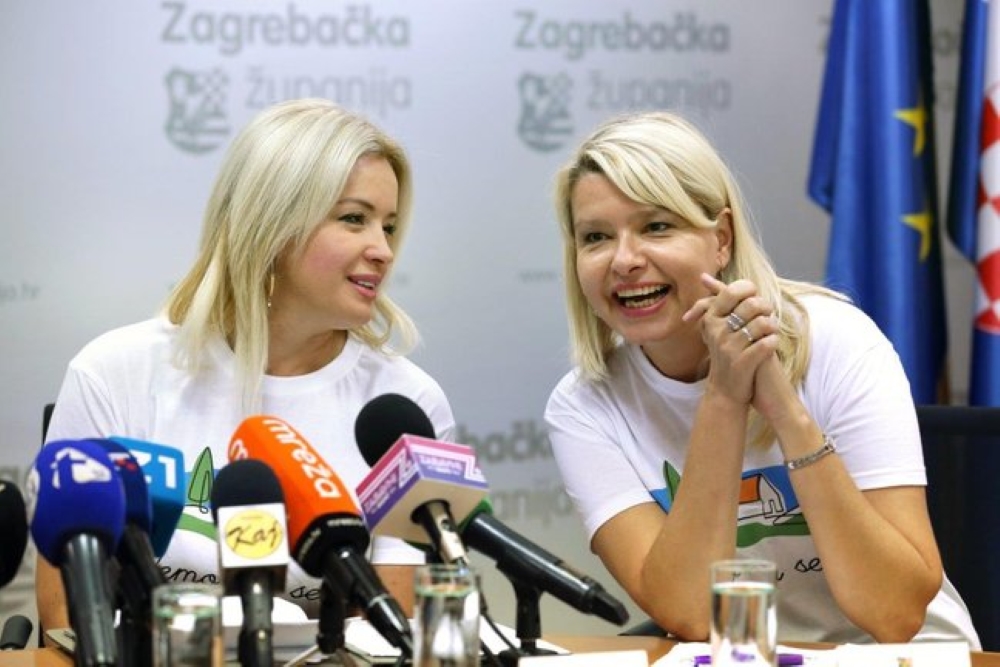 (left) Ivana Alilović, director of Zagreb County Tourist Board (right) Aleksandra Kuratko, secretary of Udruga ruralnog turizma Hrvatske (Croatian Rural Tourism Association) © Zagreb County
(left) Ivana Alilović, director of Zagreb County Tourist Board (right) Aleksandra Kuratko, secretary of Udruga ruralnog turizma Hrvatske (Croatian Rural Tourism Association) © Zagreb County
Udruga ruralnog turizma Hrvatske's online Seoski Tourism workshops begin today and their physical workshops continue next week in Istria.
If you'd like to read more about rural tourism in Croatia, then look here
PM Plenković Satisfied With Good Cooperation Between Ivanić-Grad, County and Government
ZAGREB, 9 March, 2021 - Prime Minister Andrej Plenković visited Ivanić-Grad on Tuesday, underscoring good cooperation with local and Zagreb County governments.
Speaking to the press after meeting with Mayor Javor Bojan Leš and County Prefect Stjepan Kožić, Plenković said that the investments made by the county and the town complemented government efforts to keep jobs.
"The funds for this purpose have so far affected 57,000 workers as HRK 512 million has been disbursed for job retention," the prime minister said.
€51 million from EU for county development projects
Plenković said that during the term of his government €51 million worth of projects had been agreed with the EU for this county, contributing to its development. He noted that following the reform of the local and regional government funding law, this county had received 28 percent more revenues in 2020 than in 2017.
Zagreb County has established itself among the five most developed counties in Croatia, Plenković said, praising Ivanić-Grad for investing in school infrastructure, sports halls and health tourism.
Mayor Leš highlighted the investment in the Naftalan medical rehabilitation centre and expressed his satisfaction with the collaboration with the government on public sewage system construction.
For more about politics in Croatia, follow TCN's dedicated page.
Smart City Ivanic-Grad Gets Solar-Farm Buildings and Super Fast Internet
January 4, 2020 – Following the introduction of free WiFi in public places, Smart City Ivanic-Grad surges forward with smart technologies, constructing a solar power plant on public buildings and introducing ultra-fast internet for all
Teenagers in Ivanić-Grad have cast their eyes down the tracks ever since the railway came to town. You can understand them doing so. Less than 40 kilometres from the cool, contemporary European capital of Zagreb, day trips to the excitement and buzz of the big city are looked forward to and taken at any opportunity. But, over recent times, Smart City Ivanic-Grad has been edging towards becoming its own little centre of contemporary cool.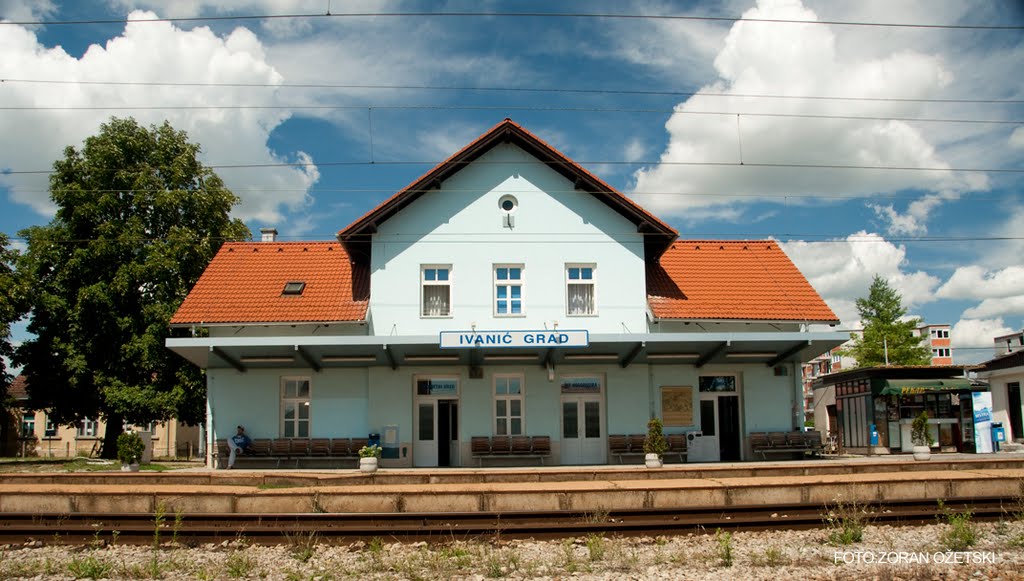 Ivanic-Grad train station © Zoran Ozetski / Grad Ivanic-Grad
Ivanic-Grad train station © Zoran Ozetski / Grad Ivanic-Grad
Smart City Ivanic-Grad is the name of the programme under which a series of energy-saving, eco-friendly and modern technologies is being adopted by the town. First came the introduction of free WiFi around the central city. The next stage of its grand connectivity investments come in the form of ultra-fast internet. By 2023, A1 Hrvatska will have invested more than HRK 77 million in the construction of the next-generation broadband access network that will enable internet speeds of up to 100 Mbit/s for residents of Smart City Ivanic-Grad, nearby Dugo Selo and the municipalities of Brckovljani, Kloštar Ivanić and Križ. The project is to be co-financed by the European Regional Development Fund. Construction will begin in the summer of 2021 and should be completed by the end of 2023. Ivanic-Grad © Visit Zagreb County
Ivanic-Grad © Visit Zagreb County
Another aspect to Smart City Ivanic-Grad's ambitions is Solar City Ivanić-Grad whereby a solar farm is set to be constructed throughout the city, with solar panels placed on public buildings. The energy produced by the panels will primarily be consumed by the buildings on which they are placed, with any excess energy delivered into the grid. So far, planned locations for the solar panels include five kindergartens, a museum, the college, library and university, a hall in Posavske Bregi, Alojz Vulinc Memorial Home, the Modular Wood Technology Entrepreneurship Incubator, Zelenjak Sports Park, the Old School in Dubrovčak Lijevo, the city administration building and two utility companies. The total value of the solar farm project is more than 10.2 million kuna, and the start of works is expected in the first quarter of next year.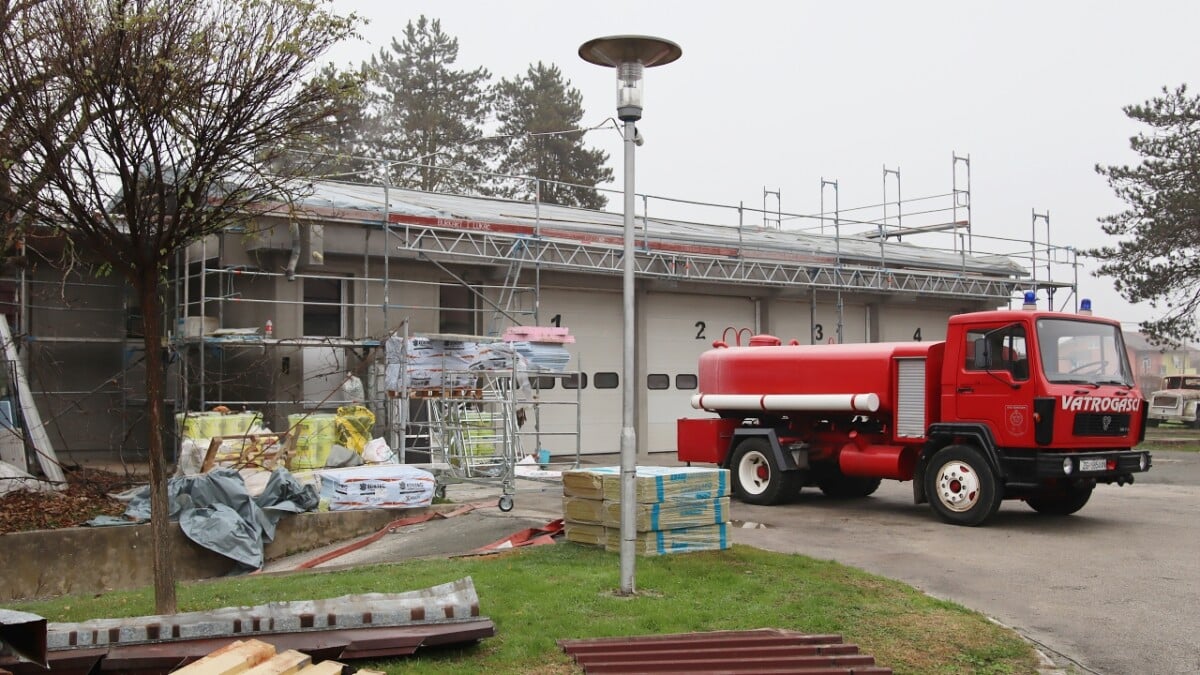 Energy-saving LED public lighting system has been introduced in Ivanic-Grad © Grad Ivanic-Grad
Energy-saving LED public lighting system has been introduced in Ivanic-Grad © Grad Ivanic-Grad
Already completed projects in the Smart City Ivanic-Grad scheme include LED public lighting, which saves 62% of energy consumption, a charging station for electric vehicles in Moslavačka Ulica, a smart bench near Ivan Švear High School and a system of public bicycles at three locations in the city.
Even nearer to Smart City Ivanic-Grad by train than the capital is Dugo Selo. As TCN reported last year, Dugo Selo will very soon be connected to a great wealth of European cities and countries by high-speed rail. It's less than 20 minutes to Dugo Selo by train from Ivanić-Grad. Soon, teenagers of the town will be able to cast their eyes down the tracks and have much more exotic destinations within reach than the regular day trips to Zagreb.
Works on 707 Million Kuna EU Project Begin in Zagreb
As Poslovni Dnevnik writes on the 31st of July, 2019, the Minister for Regional Development and EU Funds, Marko Pavić, opened the works in Ivanić-Grad, which begin within the scope of an EU project worth more than 707 million kuna, entitled "Regional Water Supply System of Zagreb County - Zagreb East".
This is a project that addresses the problems of the water supply in the functional area of the eastern part of Zagreb County.
“The municipalities and the county are working together on a project that will provide access to water for the citizens of this area, more specifically for 30,000 users, and increase the network connection from 60 to 90 percent. It will also contribute to a significant reduction in the loss of drinking water,'' Pavić noted.
As explained by Tomislav Masten, this project, along with the construction of the new Kosnica water pumping station, fifteen new pumping stations, five new water towers, 316,222 metres of new networks and the reconstruction of one pumping station, includes the reconstruction of 108,152 metres of the same network and the construction of 8,934 brand new household connections.
"The average losses in the complete system will be reduced from 29.2 percent to 18.6 percent. Its realisation will form a unique system, with the interconnection of all existing subsystems into the Regional Water Supply System of Zagreb County - Zagreb East," explained Masten.
Ivanić-Grad's mayor, Javor Bojan Leš, commented on the part of the project related directly to the Ivanić-Grad area:
“The most significant thing for us is the replacement of the existing 47 kilometres of pipes which don't work properly, but we were able to connect to the water supply system of the City of Zagreb and the Kosnica water pumping station, since the sources in the area of our city were exhausted. By changing this network and putting the Kosnica water pump into service, Ivanić-Grad will completely solve its water supply problem,'' the mayor said.
As part of this major project, works on the construction and reconstruction of water supply pipelines and associated facilities in Dugo Selo's water supply area, which include the reconstruction of 47.9 kilometres of the network, the construction of 1.5 kilometres of the network and two pumping stations "Kozinščak'' and" Domobranska'' should begin by the end of August, and their value stands at an enormous 78,914,357.95 kuna, excluding VAT.
The total investment value of the entire project is 707,108,262.00 kuna excluding VAT, of which the amount of 483,953,845 kuna has been financed by the Cohesion Fund, while VIOZŽ will participate in the amount of 44,630,883 kuna.
89,261,767 kuna will be allocated from the budget of the Republic of Croatia, and Croatian Water will also participate in the project, in the amount of 89,261,767 kuna.
Make sure to follow our dedicated lifestyle page for much more. If it's just Zagreb you're interested in, give Total Zagreb a follow or check out Zagreb in a Page for all you need to know about the capital.
Škrletovo, Festival Promoting Škrlet Wine, to be Held in Ivanić-Grad
One of the biggest events (and parties!) of the year, Škrletovo Party will be held in Ivanić-Grad again this year, starting on Saturday, April 13th 2019 at 4 pm.
The event is organized by the town of Ivanić-Grad, their Tourist Board and the Škrlet Moslavina Association. The main goal of the event is the promotion of the indigenous white wine variety Škrlet as the symbol of Moslavina region, where Ivanić-Grad is located. The event has traditionally had two separate parts: first a gathering of experts, winemakers, journalists, sommeliers etc. is held, where they discuss Škrlet and its position on the wine market. After that, in the afternoon, on the square in the centre of Ivanić-Grad, the party will be held.
8 winemakers from Moslavina are joined in the Association, and they're the ones working most hard on the promotion of the variety: Florijanović, Ilovčak, Jaram, Kezele, Miklaužić, Mikša, Trdenić and Voštinić-Klasnić. They understand that in order to position Škrlet on the market they need to act patiently, pro-actively and patiently, working hard on promotion but also on increasing the quality of wines each year, thus building the trust in their product on the wine market in Croatia.
Their wines will be offered to the public at the Škrletovo party, where you will be able to taste all of their wines with the purchase of entry fee for 80 kunas. The good atmosphere and the music will be in the hands of the local DJ Pepi Jogarde, another young local star, chef Dino Pavanić will be in charge of creating interesting finger food for the guests, and even a playground for the kids will be organized - to give parents some freedom to enjoy a glass of Škrlet.
In order to attract as many guests as possible, all train tickets to and from Ivanić-Grad on Saturday will be sold at a 40% discount.


